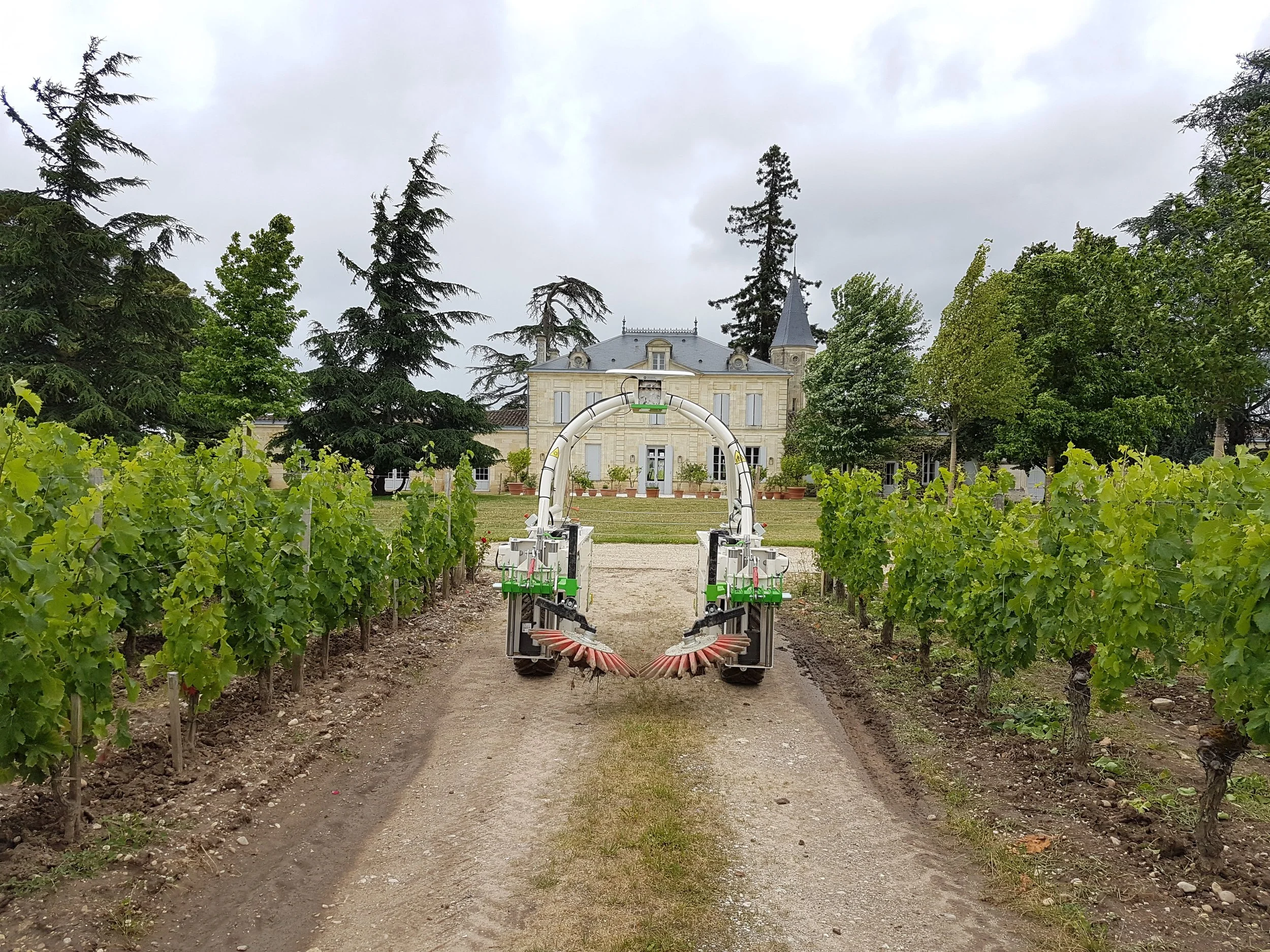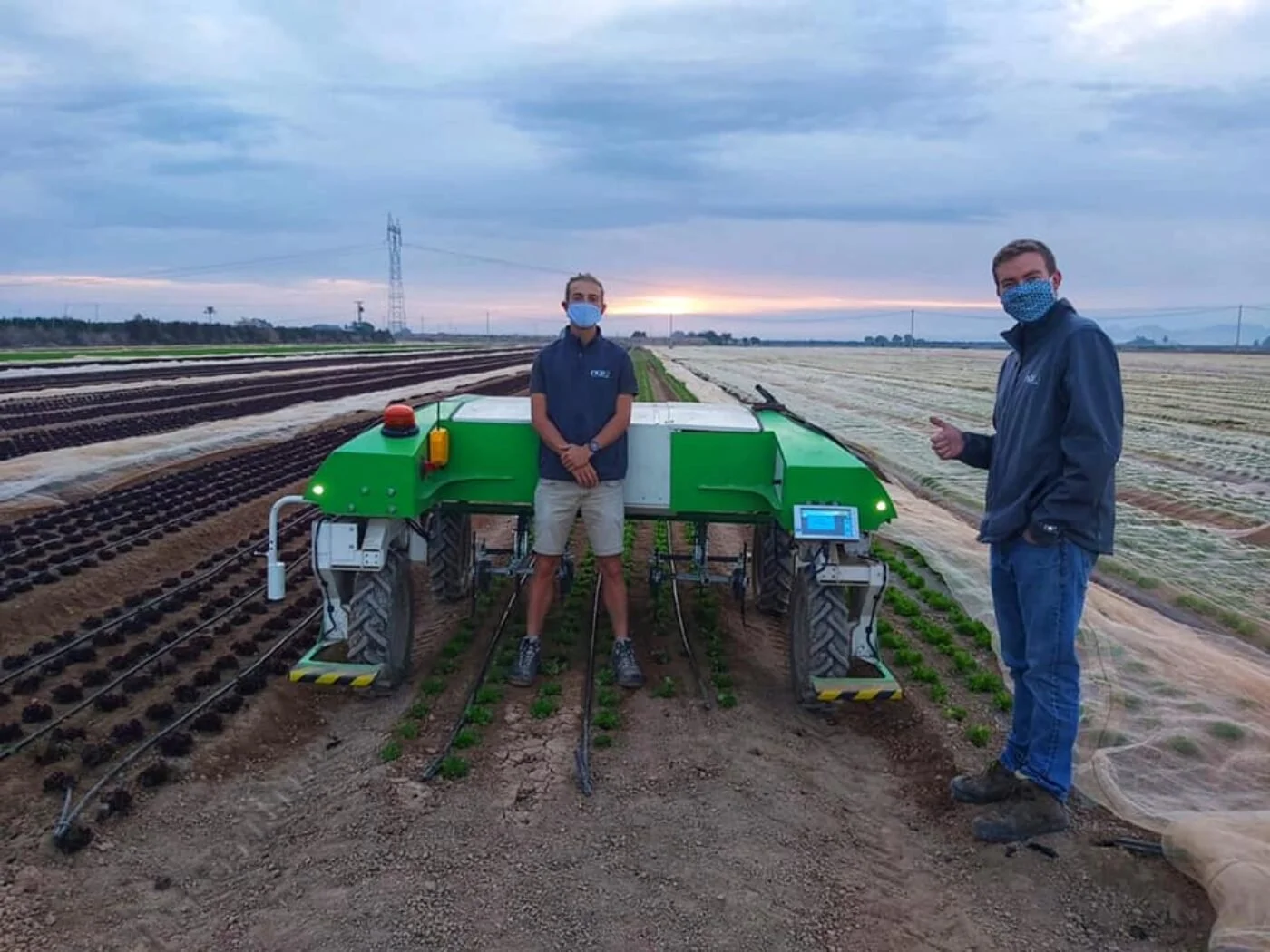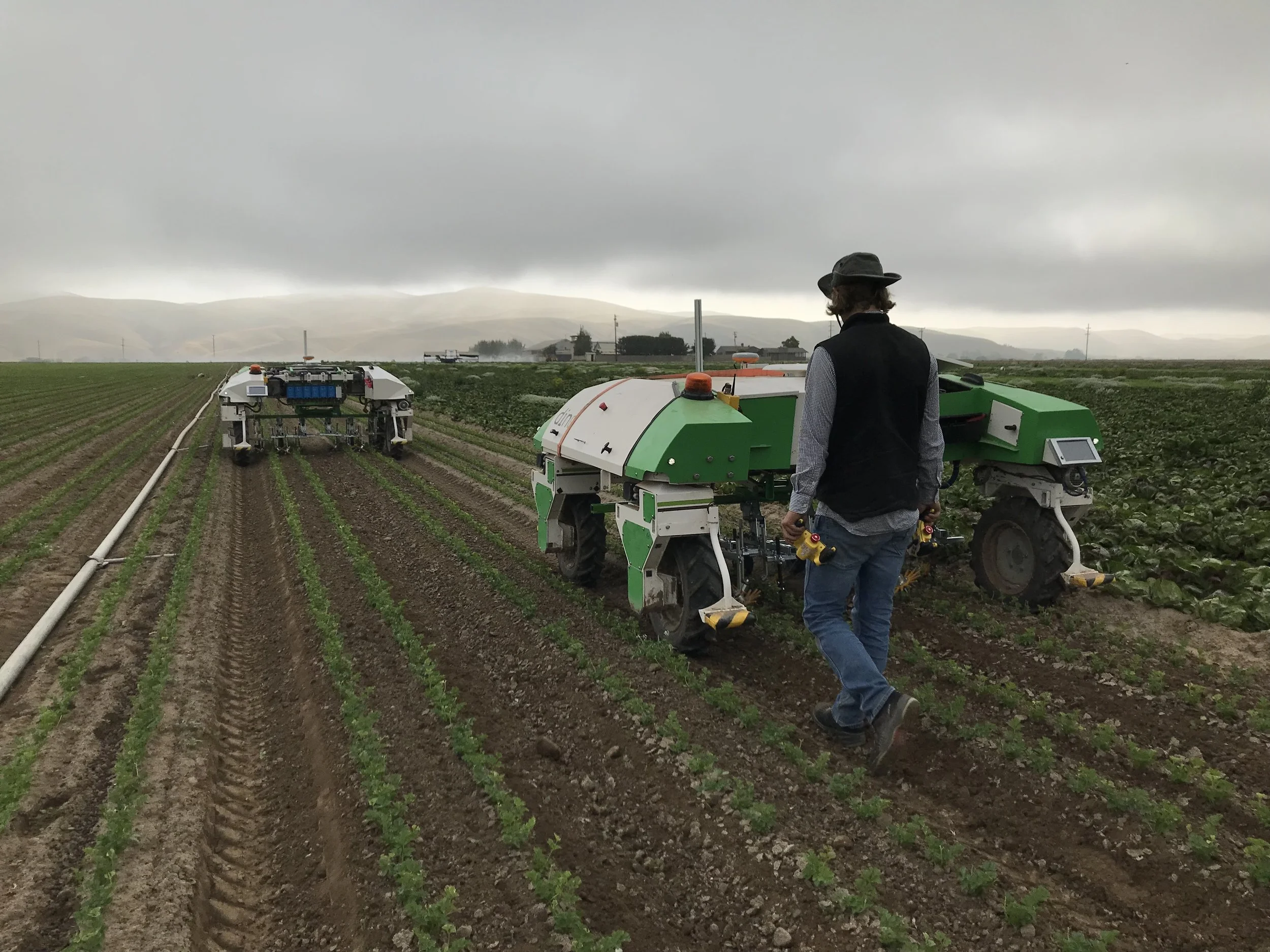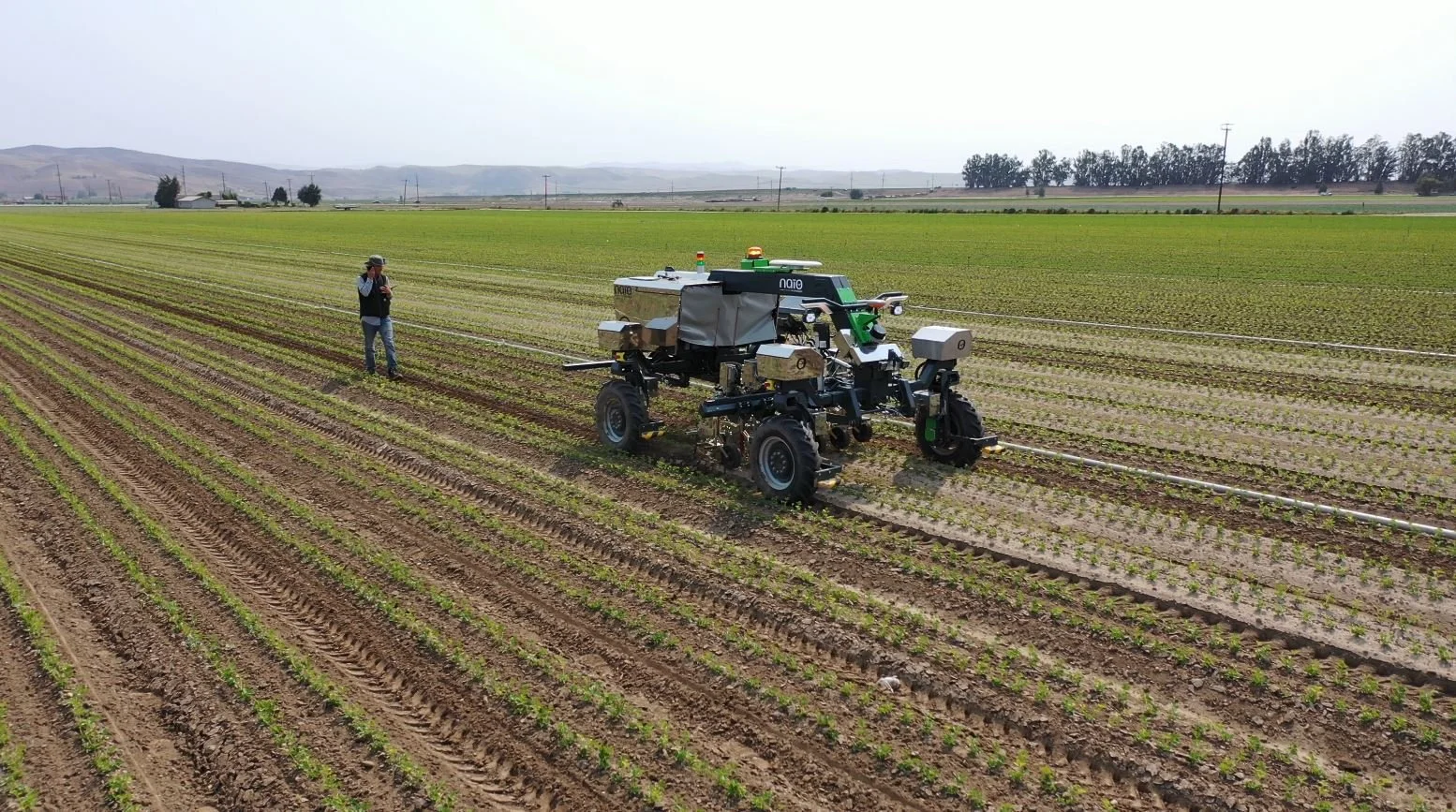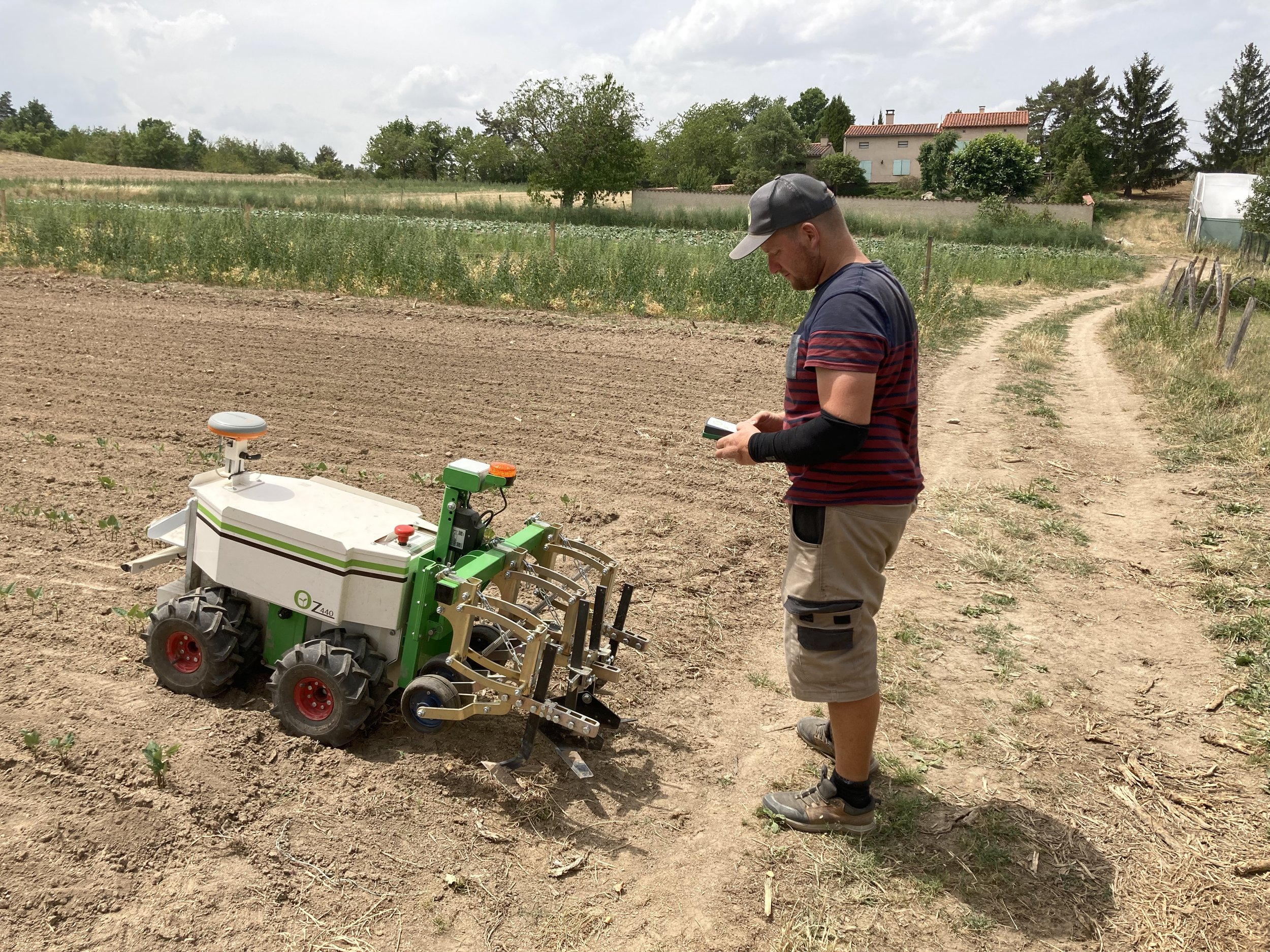Earthquake in the AgTech : After Farmwise, it's Naïo's turn to have financial difficulties
Naïo Technologies, based in Toulouse, France, is a pioneering company in the field of agricultural robotics. Founded in 2011, Naïo has dedicated itself to developing innovative robotic solutions aimed at assisting farmers with tasks such as weeding and hoeing. Their flagship robots, Oz and Dino, have been designed to enhance both efficiency and sustainability in farming practices.
Despite their groundbreaking advancements and significant contributions to the AgTech sector, Naïo Technologies is currently facing financial difficulties, leading to a judicial reorganization process, a French legal process aimed at restructuring the company or finding buyers to avoid liquidation. This situation has sent shockwaves through the French agricultural technology community, raising questions about the future of innovation in this critical industry.
Having spent two years inside the company between 2020 and 2022, I wanted to share a personal and internal perspective on the Naïo journey. This article explores how Naïo became a pioneer in agricultural robotics, its early successes, the challenges that emerged over time, and how the momentum gradually shifted. Beyond the timeline, it’s also a reflection on what we can learn from this experience — and on the potential that still exists for the future of this technology and its people.
My first Demo with TED Version 1, organized at Cheval Blanc, Saint-Emilions 2020
Why Naïo Sparked the AgTech Revolution
Naïo Technologies was not just another robotics startup. It was a spark—one of the very first to ignite what we now call the AgTech revolution. Founded in 2011 by Gaëtan Séverac and Aymeric Barthes, two engineers passionate about both technology and agriculture, Naïo positioned itself at the crossroads of two worlds that rarely spoke to each other: traditional farming and cutting-edge robotics.
Their vision was bold yet simple: support farmers by reducing their reliance on chemical inputs and manual labor through the use of autonomous robots. From that vision emerged a series of innovations that quickly set Naïo apart—not just in France, but globally.
Among these innovations was the creation of FIRA (the International Forum of Agricultural Robotics), an event that has become a cornerstone in the global AgTech calendar. By initiating FIRA, Naïo didn't just build robots; they built a community. They helped define the conversation around the future of farming, long before most people were even aware of what “AgTech” meant, 14 years ago !
I remember clearly why I decided to leave a stable and respected position at CLAAS to join Naïo. It wasn't just the promise of a robot—it was the energy of a movement. The company had a soul, a mission that resonated. Robots like Oz, a small autonomous weeding robot for small farms, and Dino, a larger platform for vegetable production, weren’t just machines—they embodied a new way of thinking about labor, sustainability, and innovation in agriculture. It was this vision of an agricultural revolution that made me give up a trainee program at CLAAS.
Naïo was pushing boundaries not just technologically, but culturally within the farming world. For a while, it truly felt like we were helping to write the future of agriculture.
Fist field I have weeded with DINO in Spain, Cartagena, 2020
Diversification Too Soon
Bringing a revolutionary product to life is never simple. Naïo Technologies wasn’t just building robots—it was pushing the limits of three deeply complex domains at once: Autonomy, Electrification, and Mechatronics, often coupled with smart tool integration. Each of these areas alone demands vast amounts of R&D, talent, time, and capital. Trying to innovate in all of them simultaneously was both inspiring and overwhelming.
Naïo has a real strength in making ideas come true. From early prototypes to public demonstrations, the company moved fast and with boldness. Naïo succeeded in pushing boundaries — but turning those ideas into robust and industrial, field-ready products came at a significant investment in time and resources. From very early on, a growing gap began to emerge between what our customers needed and what our robots could reliably deliver in the field.
This challenge was further compounded by an early decision to diversify early and widely. The product line expanded quickly to cover multiple markets :
OZ, designed for small-scale vegetable farmers;
DINO and ORIO, targeting large-scale row crop producers;
TED, focused on vineyards. (Later JO)
While diversification can be a strength in theory, by sharing developments within the range and targeting different fluctuating agricultural markets, in practice it spread resources thin. With limited engineering bandwidth, support staff, and financial runway, each new product line competed for attention. Instead of doubling down to perfect one solution, we were constantly juggling four at different levels of maturity and reliability.
In the meantime, we saw the emergence of a new generation of more specialized competitors—like Vitibot in viticulture or Farmwise/Carbon/Ecorobotics in high value crops, who have sometimes succeeded in better capturing key market segments. These companies concentrated their efforts on one use case, fine-tuning every detail, sometimes pivoting faster.
Internally, we were driven by vision, optimism, and a desire to serve all types of farmers. But the cost of that ambition was high, and it started to show—not just in delayed product improvements, but in customer satisfaction and operational strain. However, it's worth remembering that no agricultural robot manufacturer had a manual at that time. Moving forward with so many disruptive technologies—mechatronics, autonomy, smart tools—without an existing model, with small teams, and under pressure, was a constant challenge. Teams often had to work miracles with little.
Last DINO demo organized in Spain with the visit of Simon Belin, or US field guy, Cartagena, 2020
The High Cost of Going Global
Expanding internationally is often seen as a sign of success—but for hardware startups like Naïo, it can also be a dangerous overreach. My own experience working in the operational business development for Naïo in California revealed just how costly and complex internationalization can become when it’s not fully aligned with product-market fit. That’s what gave me the idea for that AgTech Market Company !
We entered the U.S. with optimism and ambition, convinced that our weeding robots could serve the needs of California’s large-scale vegetable producers. But once on the ground, it became clear: the product did not match local expectations. The fields were different, the growing methods too, and the operations much more intense (imaging the weeding needs and working hours for a 3-000ha farms).
Even more challenging was the business model we were attempting: weeding as a service. While it sounded scalable on paper, it quickly proved to be a logistical and financial unsustainable in the long term. Managing robot fleets, operators, and transport over vast areas with thin margins only deepened our deficits, year after year. In such a context, the teams on the ground gave enormously, often beyond their limits. But even the most sincere commitment cannot compensate for an economic model that is ill-suited to the local situation or for structural mismatches. But once again, let's put ourselves in context, in 2018 no one knew how to market robots under development, and this model still allowed the technology and associated services to improved! These decisions were understandable given the industry’s early momentum, VC expectations, and lack of clear blueprints in AgTech.
The proof, other ambitious players like FarmWise, Nexus Robotics, and several startups also stumbled or folded while attempting to scale weeding-as-a-service in North America. This model often demanded high capital expenditures for low operational returns, and the technical limitations of robotic weeding—especially under diverse field conditions—made the service difficult to standardize, unlike SaaS.
Behind this strategic push was another pressure: venture capital. Fundraising brought in the resources needed to grow, but also created expectations of rapid expansion and short-term results. There was little room to slow down and focus on incremental, long-term technical improvements. Naïo had to show traction, and the U.S. market was too tempting to ignore.
In hindsight, too many resources have been commited—people, time, capital—to a market 7,000 kilometers and 9 time zones away, which at the end held limited competitive advantage. Meanwhile, some U.S.-based competitors quietly pivoted toward simpler, tractor-mounted weeding tools—less revolutionary, but easier to deploy, maintain, and scale.
Compounding these difficulties was the impact of COVID-19. The pandemic disrupted nearly every part of our international efforts. Personally, it delayed my relocation to California by over a year. For a young company like Naïo, which relies heavily on physical presence in the fields, demos, and in-person relationships with growers, the lack of on-the-ground continuity significantly slowed adoption and trust-building. Equipment sat idle, partnerships stalled, and the gap between product promises and field realities had almost a whole year to grow wider.
First time running two robot at the same time, I remember it like yesterday, 5 ac (2ha) in 3 hours, record ! California, 2021
SLowly Losing Momentum
In 2021, Naïo Technologies closed a landmark fundraising round of €30 million. At the time, it felt like a validation of everything the company had built: a team of visionaries, a suite of functional robots, and a growing presence in both Europe and North America. But what followed was not the acceleration many had hoped for. Instead, we entered a period where the entire AgTech sector began to lose speed.
The macroeconomic environment shifted. Venture capital dried up. Investors—especially in hardware and robotics—became more cautious, more selective, and more grounded in lessons learned. The era of easy money was over, and AgTech, once a darling of the investment world, was now under much closer scrutiny.
One hard truth emerged: adoption wasn’t growing as fast as predicted, and the companies were not selling as well as expected. Yes, farmers are looking for solutions to labor shortages and regulatory pressures around chemical inputs. But their willingness to adopt new technology has limits.
Electric field robots still face inherent limitations: battery autonomy, driving autonomy, maintenance complexity, charging time, pricing. While the vision was strong, the value proposition wasn’t always clear to growers already operating in tight margins and unpredictable weather conditions and markets.
And the tightening of the agricultural market of the past two years has led many farmers (and winegrowers) to refocus on well-established practices. Faced with economic uncertainty, they are increasingly reluctant to adopt breakthrough technologies like robotics — which is precisely Naïo Technologies’ core business. Even the most advanced solutions struggle to gain traction when farmers prioritize reliability and robustness over experimentation, especially in a context of shrinking margins.
As time passed, it became increasingly clear that the companies gaining real traction were the ones focused on smart, tractor-towed tools—simpler, more reliable, and compatible with existing farm equipment. Players like Carbon Robotics and Ecorobotix began to shine by placing the technological intelligence in the tool itself, not necessarily the vehicle. Their approach allowed farmers to retain the robustness and familiarity of their tractors, while adding meaningful value at the point of action: the crop line.
Ironically, some companies are now circling back to autonomy, but in a different form. Carbon Robotics’ recent announcement of an autonomous tractor model (AUTOTRACTOR) is a telling sign. Autonomy may still have a future, but it must be built on a foundation of robust tooling and proven value, not the other way around.
In hindsight, one of the hardest lessons has been this: Farmers don't buy autonomy—they buy results. Reliability, durability, and simplicity still matter more than cutting-edge technologies.
Record for the largest area weeded in one day with only one robot, 10 ac, 4 ha, in California, 2021
What’s Next for Naïo Technologies?
Naïo Technologies was leaded to a judicial reorganization process, a French legal process aimed at restructuring the company or finding buyers to avoid liquidation. Despite the judicial reorganization process, Naïo Technologies is far from a company without value. Quite the contrary: over the past decade, Naïo has accumulated a unique concentration of expertise in autonomous agricultural robotics. Few players in the global AgTech landscape can boast what Naïo has already achieved :
A portfolio of four field-tested robots (Oz, Dino, Ted, and JO), each with increasing levels of robustness and refinement
A worldwide experience with more than 400 robots deployed in real-world conditions across multiple continents
A trusted network of dealers, distributors, and support teams, especially in Europe
A strong brand reputation, built through a decade of presence, field demos, and a leadership role in the AgTech community
A core team of +50 highly skilled engineers, agronomists, and field operators, many of whom have unique hands-on knowledge of autonomous systems in agriculture
These are not just intangible assets—they represent a solid foundation for whoever might want to pick up the torch.
So what could come next ?
There are several potential paths forward, here are my guesses :
Strategic acquisition by a major agricultural OEM
Companies like Kubota, CNH Industrial, or AGCO have shown increasing interest in electric platforms and autonomous technology. Acquiring Naïo could offer them a shortcut into a mature segment of the electric robotics space, especially in specialty crops. Naïo’s field-tested solutions could complement existing R&D programs or help accelerate electrification strategies.Acquisition by a competitor or AgTech startup
Startups that have taken a more modular or tool-centric approach might see value in Naïo’s autonomous chassis, embedded software, or distribution networks. While business models may differ, technology consolidation could serve both sidesNational or European industrial player
A French or European company could acquire Naïo to access its R&D capabilities, IP, and experienced talent. This could be framed as a strategic effort to preserve technological sovereignty in agricultural innovation. We recently saw the purchase of SITIA Robotic by ManitouRebirth through partial acquisition or MBO (Management Buy-Out)
In some cases, if judicial liquidation follows, it can give rise to a leaner version of the same company. A group of former managers or external investors could relaunch part of the activity under a new structure, focusing on the most viable product line and a more sustainable business model.
Whatever happens, one thing is clear: Naïo still matters. Not only because of what it has built, but because of what it represents—a pioneering effort to bridge robotics and sustainable agriculture. The end of a legal entity doesn’t necessarily mean the end of a mission. And perhaps, with the right backing, Naïo’s story is not over yet.
First Real working session with ORIO’s first version, California 2021
A Thank You, and a Legacy That Endures
As I look back on my two years with Naïo Technologies, I can only feel gratitude.
Gratitude for the people I had the chance to work with—brilliant, driven, creative, and resilient. Gratitude for the spirit of the company: bold, unafraid to challenge norms, and determined to bring about real change in agriculture. At Naïo, we didn’t just build robots—we built a vision, together.
We learned to move fast, to fall and get back up, to trust each other, and to keep pushing forward, even when the road got steep. Those adventures, setbacks, and small victories have shaped me deeply. I know I’m not alone in feeling that.
So to Naïo, and to everyone who’s been part of its journey: Thank you. Thank you for the ride, for the lessons, for the memories. Whatever happens next, the impact you’ve had on the AgTech world is real, and lasting. The sector will remember you—not just for the machines, but for the movement you helped start…and also what you've been through. Pioneers often take the hit, but they're the ones who lead the way.
The story of Naïo can’t be over, now more than ever it needs the help the AgTech Ecosystem to find a solution and secure their valuable assets before it is too late ! Deadline for submitting an application: June 27, 2025
First on-site reportage for Future Farming as an independent, Saint-Etienne, 2022
Are you struggling to develop your product in the AgTech market? Let’s talk! I can help you analyze your market and develop a clear strategy. Contact me on LinkedIn or organize a meeting here ⬇️
THE ROAD TO SUCCESSFUL DEVELOPMENT OF AN AGTECH SOLUTION
Ep 0/7 : IS THE AGTECH INDUSTRY IN CRISIS ?
Ep 1/7 : HOW TO SUCCESSFULLY POSITION YOUR PRODUCT IN THE AGRICULTURAL MARKET?
Ep 2/7 : HOW TO ADAPT YOUR AGRICULTURAL MACHINES TO MARKET AND CUSTOMER NEEDS?
Ep 3/7 : MAKING A SUCCESS OF YOUR FIRST PILOT PROJECTS WITH FARMERS
Ep 4/7 : MAXIMIZE THE RETURN ON INVESTMENT (ROI) OF YOUR AGTECH SOLUTIONS !
Ep 6/7 : OPTIMIZING PRODUCT SCALING THROUGH FINAL USER FEEDBACK
Want to learn more about Agtech opportunities ?
AMERICAN MARKET - 🇺🇸
AUSTRALIAN MARKET - 🇦🇺
CALIFORNIAN MARKET - 🇺🇸
CANADIAN MARKET - 🇨🇦
EUROPEAN MARKET - 🇪🇺
FRENCH MARKET - 🇫🇷

